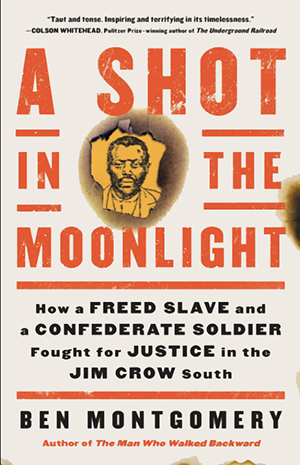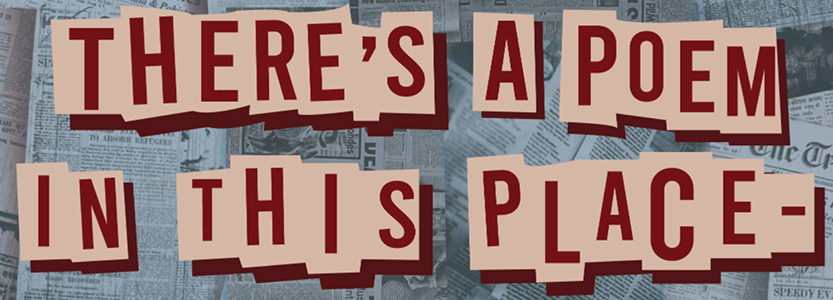||| BOOK REVIEW by JENS KRUSE |||
January 21, 1897
When the guns fell silent and the white men took cover, George Dinning burst out of the back of his little wooden house, wearing only his undergarments. He ran through the frigid January air, and when he reached the tall grass of a nearby field, he hurled himself down flat on his back, his lungs heaving, his breath visible and rising beneath the moon almost full and what seemed to be a million stars poking through the smoky blue-black midnight sky. He lay still and quiet and listened to the men’s voices coming from the north, beyond the house. They sounded at first as if they were in a state of consternation, but the voices grew distant as time slid by, suggesting retreat. When he could no longer hear the voices over the heartbeat in his own ears, he sat up slowly, looked around, then darted across the field toward his house. His wife met him at the door with his boots, his heavy coat, and his hat, and he dressed quickly, without saying much, then turned away from the humble home he had built with his own hands, the only home his children had ever known, the home he had defended, and he disappeared into the darkness. (3)
This is how Ben Montgomery — teller of such fascinating stories as Grandma Gatewood’s Walk, The Leper Spy, and The Man Who Walked Backward – opens what may be his most fascinating, and most relevant, story yet: A Shot in the Moonlight: How a Freed Slave and a Confederate Soldier Fought for Justice in the Jim Crow South.
The subtitle announces the contours of the story, but an unwieldy, but more comprehensive subtitle might have been: How a freed slave was almost lynched, defended his home, killing a white man in the process; how his wife and children were run off their property the next morning by the same mob, how their home and their farm were burned to the ground; how George Dinning gave himself up to the sheriff in a nearby town, who protected him from the mob, until a proper trial could be started; how the governor protected him from the mob during the trial; how he was acquitted of the charge of murder, but convicted of manslaughter and sentenced to seven
years of hard labor; how the progressive governor of Kentucky pardoned him; how George Dinning and his family tried to start a new life in Indiana, across the river from Louisville; how unknown assailants ambushed him and beat him within an inch of his life, cracking his skull and gouging out one of his eyes; how a former confederate soldier and crack attorney from Louisville, Bennett H. Young, helped him sue the members of the would-be lynch mob for damages in two civil suits and won, although collecting the damages awarded to him proved difficult; how George, after all this, tried to continue with his life, taking care of his family.
 While George Dinning is definitely the main protagonist of this story, Bennett Young is a fascinating character in his own right. During the Civil War, Young served in the Confederate Army and is perhaps best remembered as the architect and executor of, in October of 1864, a daring Confederate raid high in the North, on the small town of St. Albans, Vermont. After the war, he became a main contributor to the mythology of the Lost Cause, and – at the same time that he was providing pro bono legal assistance to Dinning — he worked tirelessly to erect Confederate monuments to the glory of men who had fought to preserve slavery.
While George Dinning is definitely the main protagonist of this story, Bennett Young is a fascinating character in his own right. During the Civil War, Young served in the Confederate Army and is perhaps best remembered as the architect and executor of, in October of 1864, a daring Confederate raid high in the North, on the small town of St. Albans, Vermont. After the war, he became a main contributor to the mythology of the Lost Cause, and – at the same time that he was providing pro bono legal assistance to Dinning — he worked tirelessly to erect Confederate monuments to the glory of men who had fought to preserve slavery.
Montgomery describes this apparent contradiction as follows:
Young would devote time and money to memorializing his dead Confederate comrades, to building monuments and lore supporting the Lost Cause, but he would also go out of his way to help a person of color in hard times, with no motivation of any explicit benefit to himself. (127)
Montgomery reflects:
Maybe he faced some kind of moral reckoning and changed his ways. Maybe his benevolence was coupled with white supremacy, the notion that a certain kind of power came from kindness. Or maybe his power enabled his kindness. Maybe he believed when he signed up to fight, still a young man, that secession was fundamentally an issue of the rights of the states to self-governance. Or maybe when the war was over and enslavement was ended he sought ways to help his fellow man regardless of color. (127)
The contradictions within the story of Bennett are in a way only a subset of the contradictions within the story of George Dinning. In some ways this is a hopeful story. A Black man threatened by a mob is not lynched. He successfully defends his home, even if only for a day. He makes it to a trial, he is convicted ‘’only’’ of a lesser charge, he is pardoned, he is one of the few Black men of the time who wins, not one, but two, civil suits in court. In spite of a brutal beating he can continue with his life. But, as Montgomery makes clear, Dinning is very much the exception. While his story unfolds, lynchings – and Montgomery does not flinch from describing these in their utter barbarity — continue apace all around him. And even the modicum of justice Dinning wins is only partial; he is never able to collect more than a fraction of the monetary awards granted him. More significantly, he and his heirs never re-gain possession of the land which Dinning farmed.
And that contradiction, it seems to me, is really what Montgomery’s books is all about, it is why I called it, at the beginning of this review, maybe his most relevant story yet. That contradiction has festered throughout our history and has recently taken front and center again. As Montgomery says in his preface:
The problem with the Confederate flag and the granite statues of dead soldiers is that the Civil War never ended. It devolved into skirmishes and entanglements. As Nikole Hannah-Jones has written, it morphed into looser, legal forms of enslavement that are just as damaging as the whip. It rages on Facebook and in classrooms and in the streets of American cities, still. Its agents of trouble are the Proud Boys and good ol’ boys and police with no-knock warrants and whites who should know better but choose silence. (xii)
Ben Montgomery’s A Shot in the Moonlight. How a Freed Slave and a Confederate Soldier Fought for Justice in the Jim Crow South. (New York: Little, Brown Spark, 2021) is available from the Orcas Library. Copies , some of them autographed, can be obtained through Darvill’s Bookstore.
Ben Montgomery, under the auspices of the Orcas Library, will give a Zoom talk and answer questions about his book, on March 10, at 6 pm. Please look for further information on the library website and elsewhere.








